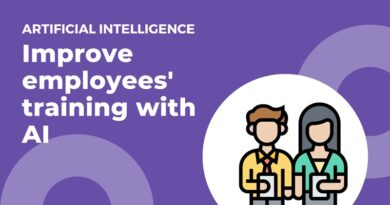How the cloud brought Informatica and Oracle together
We were often a bit confused when we watched conference keynotes in which vendors encouraged their loyal partners to sing their praises in front of captive audiences. However, our attention was spurred when, during the keynote, Informatica CEO Amit Walia introduced special guest and new BFF, Oracle’s Andy Mendelsohn, to announce and announce their new partnership. In particular, it’s remarkable to see old competitors combine with realism that reflects how the cloud is changing not only the way businesses run their IT systems, but also the way public service providers. The technology is arranged at a time when traditional IT businesses are now finding themselves playing a challenging role.
Informatica and Oracle have signed a new strategic partnership in which Oracle has named Informatica as a “preferred partner” for enterprise cloud data integration and governance, with Informatica already integrated with the Enterprise Cloud Database. Oracle autonomous database on OCI. It is worth noting that 1015 years ago, which is a geological time but a few centuries in the technological clock, we questioned not if, but when Oracle completed its crazy acquisition at the beginning of the year. 2000s by purchasing Informatica.
Adding to the data intrigue
Let’s have some fun in dialing up the intrigue a bit further. Post Y2K, the software industry underwent a dramatic consolidation where midsized vendors essentially those below $500 million sales were getting snapped up by the IBMs, Microsofts, Oracles, and SAPs of the world. These were the vendors that were defining their own platform ecosystems, and if you played Switzerland, you were considered an endangered species.
Informatica was one of those hot pre-Y2K companies that, temporarily as it turned out, lost its way in the early 2000s. That’s when it embarked on an abortive “analytic applications” push that threatened to erode the third-party ecosystem that was key to its Switzerland positioning. Credit Oracle alumnus Sohaib Abassi for the midcourse correction that instead redirected the company’s footprint from ETL and apps to data integration. It’s a lesson that Snowflake today has benefitted from as it has moved carefully not to step on the partners who have chosen it as their preferred cloud analytic platform destination.
Nonetheless, as Abassi was putting Informatica back on course, it coincided with the peak of Oracle’s acquisition streak where it swallowed up, not only ERP rivals like PeopleSoft of JD Edwards, but also technology providers in Informatica’s space like GoldenGate for replication.
Abassi stabilized and then grew Informatica’s revenues sufficiently to keep activist investors at bay who would have otherwise pushed for an exit. But the strategy eventually hit the wall when the 2008-10 recession caught up to it, leaving the company with a broad but rather disparate portfolio. The recession also slowed Oracle’s acquisitive appetite. But for Informatica, it didn’t stall pressure from activist investors like Elliott Management.
Why the cloud is now an obvious choice
While investors were nipping at Informatica’s heels, emergence of the cloud as future platform also helped trigger Informatica’s $5.3 billion deal to go private back in 2015. And the cloud also prompted Oracle to once more take stock. And just like Informatica back in the early 2000s, it drove the company to go back to basics. Yes, Oracle had built a portfolio of tooling dealing addressing much of enterprise integration and data governance. But with the cloud, Oracle needed to focus on its core portfolio: databases and enterprise applications, and then build out the Gen2 cloud to run them.
That points to a couple reasons why Oracle is now placing more premium on partnerships. First, it is more critical for Oracle to expend its billions building out global cloud regions rather than horizontal software acquisitions, and secondly, if it wants to broaden the appeal of its cloud, it needs a healthy partner ecosystem.
Cue in Informatica. Lots of Oracle customers use Informatica tools and so if Oracle wants to grow its cloud footprint, the direction is obvious. OK, at least to us, now, in retrospect.
The cloud has upended, not only the hierarchy of who are the core platform players, but also remixed the combinations of who are friends, frenemies, and rivals. IBM, like Oracle, which came later to the cloud, acknowledges that its core strength is rationalizing a multicloud world. And so, IBM just inked a strategic partnership to host its SaaS services, not only on IBM Cloud, but now AWS as well – as many of IBM’s core customers are already running there. Oracle came to similar conclusions, but with Microsoft Azure, based on the realization that many of its customers were already using Power BI and Office 365. In Oracle’s case, it responded by establishing direct, high-speed interconnects to Azure regions so joint customers could operate with microsecond latency. Who’da thunk?
So, on one level, it seemed a bit surprising to see Andy Mendelsohn headlining on Informatica’s stage. But when you think about how the cloud has rejiggered the world, well, maybe it shouldn’t have seemed like such a shock after all.




